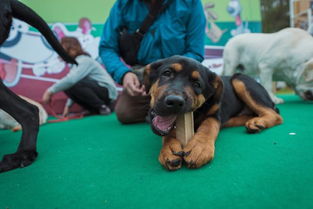
Understanding the Bite
 When you find yourself on the receiving end of a dog bite, the immediate concern is often the physical injury. However, it’s crucial to understand that the aftermath of a dog bite can be complex, involving both physical and emotional healing. This article aims to provide you with a comprehensive guide on how to treat a dog bite, ensuring you’re well-prepared for any situation.
When you find yourself on the receiving end of a dog bite, the immediate concern is often the physical injury. However, it’s crucial to understand that the aftermath of a dog bite can be complex, involving both physical and emotional healing. This article aims to provide you with a comprehensive guide on how to treat a dog bite, ensuring you’re well-prepared for any situation.
The first step after a dog bite is to assess the severity of the injury. If the bite is minor, you might notice a small puncture wound. In such cases, you can clean the wound with soap and water, apply an antibiotic ointment, and cover it with a sterile bandage. However, if the bite is more severe, with deep punctures or significant bleeding, it’s essential to seek medical attention immediately.
Immediate First Aid

Here’s a step-by-step guide on how to provide immediate first aid for a dog bite:
- Wash the wound: Gently clean the wound with soap and water to remove any dirt or debris.
- Apply pressure: If the wound is bleeding, apply gentle pressure with a clean cloth or bandage to stop the bleeding.
- Bandage the wound: Once the bleeding has stopped, cover the wound with a sterile bandage to protect it from infection.
- Seek medical attention: If the bite is severe or if you notice signs of infection, such as redness, swelling, or fever, seek medical attention immediately.
Preventing Infection

One of the most critical aspects of treating a dog bite is preventing infection. Here are some tips to help you keep the wound clean and reduce the risk of infection:
- Keep the wound clean: Change the bandage regularly and wash your hands before and after touching the wound.
- Use antibiotic ointment: Apply an antibiotic ointment to the wound to help prevent infection.
- Avoid picking at the wound: Picking at the wound can introduce bacteria and delay healing.
When to Seek Professional Help
In some cases, you may need to seek professional help for a dog bite. Here are some situations where you should consider visiting a doctor:
- Deep punctures: If the dog bite creates deep punctures, there’s a higher risk of infection and the need for stitches.
- Signs of infection: If you notice redness, swelling, fever, or discharge from the wound, seek medical attention.
- Location of the bite: If the bite is on a sensitive area, such as the face or hands, it’s best to consult a doctor.
- Unknown dog’s vaccination status: If you’re unsure about the dog’s vaccination history, it’s essential to seek medical attention to rule out rabies and other diseases.
Long-term Care
In some cases, a dog bite can lead to long-term complications, such as scarring or nerve damage. Here are some tips for long-term care:
- Follow-up with a doctor: Keep all follow-up appointments with your doctor to monitor the healing process.
- Physical therapy: If you experience nerve damage or muscle weakness, physical therapy can help improve your mobility.
- If you develop scars, use scar-reducing creams or ointments to minimize their appearance.
Table: Common Symptoms of Dog Bite Infection
| Symptom | Description |
|---|---|
| Redness | Increased redness around the wound |
| Swelling | Inflammation around the wound |
| Fever | Increased body temperature |
| Discharge | Fluid or pus coming from the wound |







